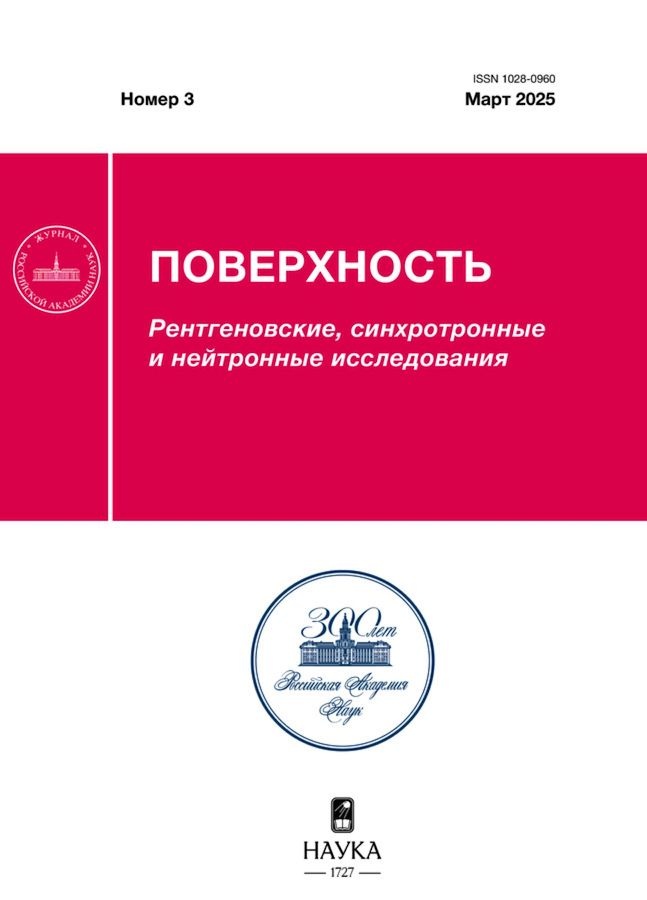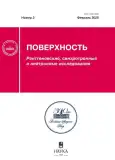Распыление полимерных покрытий при высокофлуенсном облучении потоком кислородной плазмы
- Авторы: Черник В.Н.1, Новиков Л.С.1, Соколова С.П.2, Куриленок А.О.2, Поручикова Ю.В.2
-
Учреждения:
- Московский государственный университет им. М.В. Ломоносова
- Ракетно-космическая корпорация “Энергия” им. С.П. Королёва
- Выпуск: № 2 (2025)
- Страницы: 25-31
- Раздел: Статьи
- URL: https://vietnamjournal.ru/1028-0960/article/view/686770
- DOI: https://doi.org/10.31857/S1028096025020042
- EDN: https://elibrary.ru/EHEGOE
- ID: 686770
Цитировать
Полный текст
Аннотация
Полимерные покрытия применяют на поверхности низкоорбитальных космических аппаратов, где они подвергаются агрессивному воздействию набегающего потока атомарного кислорода. При длительном пребывании на орбите (10–20 лет) флуенс атомарного кислорода достигает 1022 см–2 и более, что приводит к разрушению поверхности полимеров на глубину, достигающую нескольких сотен микрометров. Исследованы три типа перспективных покрытий на основе кремнийорганических полимеров: композиция ЭКТ-ПЦ, лак ЭКТ, герметик УФ-7-21, которые предполагают применять на низкоорбитальных космических аппаратах. Для оценки их стойкости к атомарному кислороду при имитации набегающего потока с высоким флуенсом до 1022 см–2 в лабораторных условиях применена методика ускоренных испытаний в потоке кислородной плазмы при энергии частиц кислорода 10–40 эВ. Исследованы зависимости потери массы от эквивалентного флуенса, измеренные коэффициенты эрозии покрытий композиции ЭКТ-ПЦ, лака ЭКТ и герметика УФ-7-21 составили 4.2 × 10–26, 3.2 × 10–26 и 1.7 × 10–26 г/атом О соответственно. В сравнении с применяемыми на космических аппаратах полимерами (например, полиимидом с коэффициентом эрозии 4.3 × 10–24 г/атом О) измеренные коэффициенты эрозии на два порядка ниже, что характеризует высокую стойкость исследуемых материалов к атомарному кислороду. На основе полученных зависимостей потерь массы образцов от флуенса плазмы прогнозируемый предельный флуенс атомарного кислорода составляет (7–25) × 1023 см–2 в зависимости от типа и толщины покрытия.
Полный текст
Об авторах
В. Н. Черник
Московский государственный университет им. М.В. Ломоносова
Автор, ответственный за переписку.
Email: vlachernik@yandex.ru
Россия, Москва
Л. С. Новиков
Московский государственный университет им. М.В. Ломоносова
Email: vlachernik@yandex.ru
Россия, Москва
С. П. Соколова
Ракетно-космическая корпорация “Энергия” им. С.П. Королёва
Email: svetlana.sokolova@rsce.ru
Россия, Королёв
А. О. Куриленок
Ракетно-космическая корпорация “Энергия” им. С.П. Королёва
Email: svetlana.sokolova@rsce.ru
Россия, Королёв
Ю. В. Поручикова
Ракетно-космическая корпорация “Энергия” им. С.П. Королёва
Email: svetlana.sokolova@rsce.ru
Россия, Королёв
Список литературы
- Акишин А.И., Новиков Л.С., Черник В.Н. Воздействие космической среды на материалы и оборудование космических аппаратов. // Новые наукоемкие технологии в технике. Энциклопедия. Т. 17. / Ред. Новиков Л.С., Панасюк М.И. М.: ЗАО НИИ “ЭНЦИТЕХ”, 2000. С. 100.
- Гужова С.К., Новиков Л.С., Черник В.Н., Скурат В.Е. Воздействие космической среды на материалы и оборудование космических аппаратов. // Модель космоса. Т. 2. / Ред. Новикова Л.С. М.: Книжный дом “Университет”, 2007. С. 171.
- Minton T.K., Garton D.J. Dynamics of Atomic Oxygen Induced Polymer Degradation in Low Earth Orbit. // Chemical Dynamics in Extreme Environments. Advanced Series in Physical Chemistry. V. 11. / Ed. Dressier R.A. World Scientific Publishing, 2001. P. 420.
- Gordo P., Frederico T., Melício R., Duzellier S., Amorim A. // Adv. Space Res. 2020. V. 66. P. 307.
- Tagawa M., Minton T.K. // MRS Bull. 2010. V. 35. P. 35.
- Акишин А.И., Новиков Л.С. Физические процессы на поверхности искусственных спутников Земли. М.: Изд-во МГУ, 1987. 89 с.
- Акишин А.И., Гужова С К. // Физика и химия обработки материалов. 1993. № 3. С. 40.
- Duo S.W., Li M.S., Zhou Y.C. // J. Mater. Sci. Technol. 2003. V. 19. Iss. 6. P. 535.
- Тупиков В.И., Клиншпонт Э.Р., Милинчук В. К. // Химия высоких энергий. 1996. Т. 30. С. 49.
- Гулино Д.А. // Аэрокосмическая техника. 1989. № 5. С. 119.
- Chen J., Ding N., Li Z., Wang W. // Prog. Aerosp. Sci. 2016. V. 83. P. 37. https://www.doi.org/10.10.16/j.paerosci.2016.02.002
- Zhao W., Li W., Liu H., Zhu L. // Chinese Journal of Aeronautics. 2010. V. 23. P. 268. https://www.doi.org/10.1016/s1000-9361(09)60215-6
- Imamura S., Sasaki M., Yamamoto Y. // Jpn. J. Soc. Aeronaut. Space Sci. 2021. V. 69. P. 35. https://www.doi.org/10.2322/jjsass.69.35
- Yugo Kimoto, Kazuki Yukumatsu, Aki Goto // Acta Astronautica. 2021. V. 179. P. 695. https://www.doi.org/10.1016/j.actaastro.2020.11.048
- Shalin R.E., Minakov V.T., Deev I.S., Nikishin E.F. // Proc. 7th Int. Symposium On Materials in Space Environment. Toulouse, France. 1997. P. 375.
- De Groh K.K., Banks B.A., McCarthy C. // Proc. 10th Int. Symposium on Materials in a Space Environment and 8th Int. Conf. of Protection of Materials and Structures in a Space Environment. Colliuore, France. 2006. P. 215.
- Kleiman J., Iskanderova Z., Gudimenko Y. // Proc. 9th Symposium on Materials in Space Environment. Noordwijk, Netherlands. 2003. P. 313.
- Новиков Л.С., Черник В.Н. Применение плазменных ускорителей в космическом материаловедении. М.: Университетская книга, 2008. 89 с.
- А.с. № 1797448 (СССР). Газоpазpядный источник плазмы дуоплазмотpонного типа. / МГУ им. М.В. Ломоносова. Черник В.Н. // Б.И. 1995. № 19. С. 3.
- Chernik V.N. // Proc. 7th Int. Symposium Materials in Space Environment, Toulouse, France. 1997. P. 237.
- ASTM. Standard Practics for Ground Laboratory Atomic Oxygen Interaction Evaluation of Material for Space Applications. Designation E 2089-00. 2006.
- Li Y., Qian Y., Qi H., Li J., Sun J. // Adv. Mater. 2018. V. 30. P. 1803854.
- Eduok U., Faye O., Szpunar J. // Prog. Org. Coat. 2017. V. 111. P. 124. https://www.doi.org/10.1016/j.porgcoat.2017.05.012
- Черник В.Н. // Поверхность. Рентген., синхротр. и нейтрон. исслед. 2014. Т. 18. № 3. С. 44.
Дополнительные файлы










